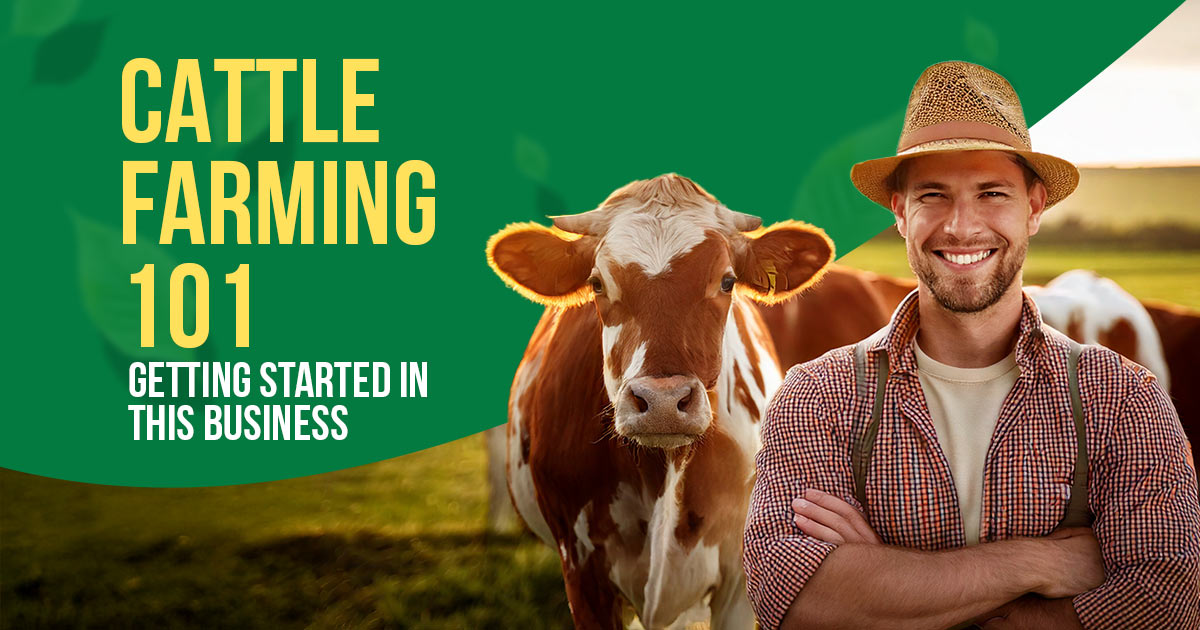Cattle Farming 101: Getting Started in this Business

Starting a cattle farming business takes careful planning, the right resources, and a solid strategy to succeed. A well-structured cattle farming business plan helps outline everything from choosing the right breed to managing pasture, feed, and health care. Having a clear roadmap ensures profitability and long-term growth while avoiding common pitfalls. With the right approach, raising cattle can be a rewarding and sustainable venture.
What You’ll Need Before Starting a Cattle Business
Getting started with cattle farming requires more than just purchasing livestock. Proper planning and the right resources ensure a smooth operation and long-term success. A well-prepared setup makes daily tasks easier and helps avoid unnecessary costs. Here are the essentials for running a productive cattle operation:
- Sizeable Area of Land – Cattle need plenty of space to graze and roam freely. The amount of land depends on herd size, pasture quality, and grazing methods.
- Troughs for Feeding – Durable feeding troughs keep food clean and prevent waste. Properly placed troughs help distribute feed evenly and reduce crowding.
- Breed of Cattle – Choosing the right breed depends on climate, market demand, and the goal of the farm, whether it’s for beef or dairy production.
- Boundary or Wall Fence – Strong fencing keeps cattle secure and protects them from predators. Options include barbed wire, electric fencing, or wooden enclosures.
- Farming Equipment – Basic tools like hay balers, feeders, and water pumps are necessary for daily operations and livestock care.
- A Tractor – A reliable tractor helps with tasks like transporting feed, clearing land, and maintaining pastures. Investing in the right model improves efficiency.
Steps to Follow to Build a Thriving Cattle Business
Setting up a profitable cattle farm requires careful planning, the right location, proper equipment, and a clear purpose. A well-structured approach ensures efficiency and long-term sustainability. Each step plays a vital role in creating a productive operation that meets market demands.
Business Plan
A strong cattle farming business plan lays the foundation for success. It should cover startup costs, expected expenses, potential profits, and strategies for herd management. This plan helps in securing loans, attracting investors, and ensuring smooth operations. Financial projections, land requirements, and market analysis should also be included.
Good Farm Location
Choosing the right location impacts the health and productivity of the herd. A suitable farm should have access to clean water, quality grazing land, and proper drainage to prevent flooding. Being close to markets, suppliers, and veterinary services reduces costs and makes farm management easier.
Purchasing of Machinery and Other Types of Equipment
The right equipment improves efficiency and reduces manual labor. Apart from a tractor, other essential machinery includes:
- Feed Mixers – Helps prepare balanced diets for cattle.
- Water Pumps and Storage Tanks – Ensures a steady supply of clean water.
- Milking Machines (for Dairy Farms) – Speeds up the milking process and maintains hygiene.
- Handling Equipment – Items like squeeze chutes, headgates, and weighing scales make cattle management safer and easier.
Shelters for the Cattle
Providing proper shelter protects cattle from harsh weather and keeps them comfortable. Barns, sheds, and covered pens should have good ventilation, dry bedding, and enough space to prevent overcrowding. Shelter designs should allow easy cleaning and feeding access.
Purpose of the Farm and Cattle
The type of cattle and farm setup depend on the intended purpose. Some farms focus on beef production, while others specialize in dairy or breeding stock. Each purpose requires different breeds, feeding methods, and management techniques.
- Choosing the Right Breed – Select breeds suited to local climate and market demand, such as Angus for beef or Holstein for dairy.
- Purchasing Cattle – Buy healthy livestock from reputable breeders or auctions to avoid diseases and genetic issues.
- Animal Feeding – Develop a feeding program based on nutritional needs, ensuring access to quality pasture, hay, and necessary supplements.
Taking Care of the Animals
Proper animal care keeps cattle healthy and productive. Regular health checks, a balanced diet, and waste management contribute to a well-maintained herd.
- Consulting Professionals – Work with veterinarians, nutritionists, and livestock experts to ensure proper care.
- Vaccination and Disease Control – Follow a vaccination schedule and monitor cattle for illnesses.
- Waste Management and Composting – Use cow manure for compost to improve soil quality and maintain a clean farm environment.
Turning Your Cattle Business Plan into Reality
Starting a cattle farm takes planning, effort, and the right resources, but the rewards make it worthwhile. A well-structured approach helps manage land, equipment, and livestock efficiently while keeping costs under control. Staying informed, working with experts, and adapting to market changes will keep the farm running smoothly. With the right mindset and preparation, raising cattle can become a profitable and sustainable business.
